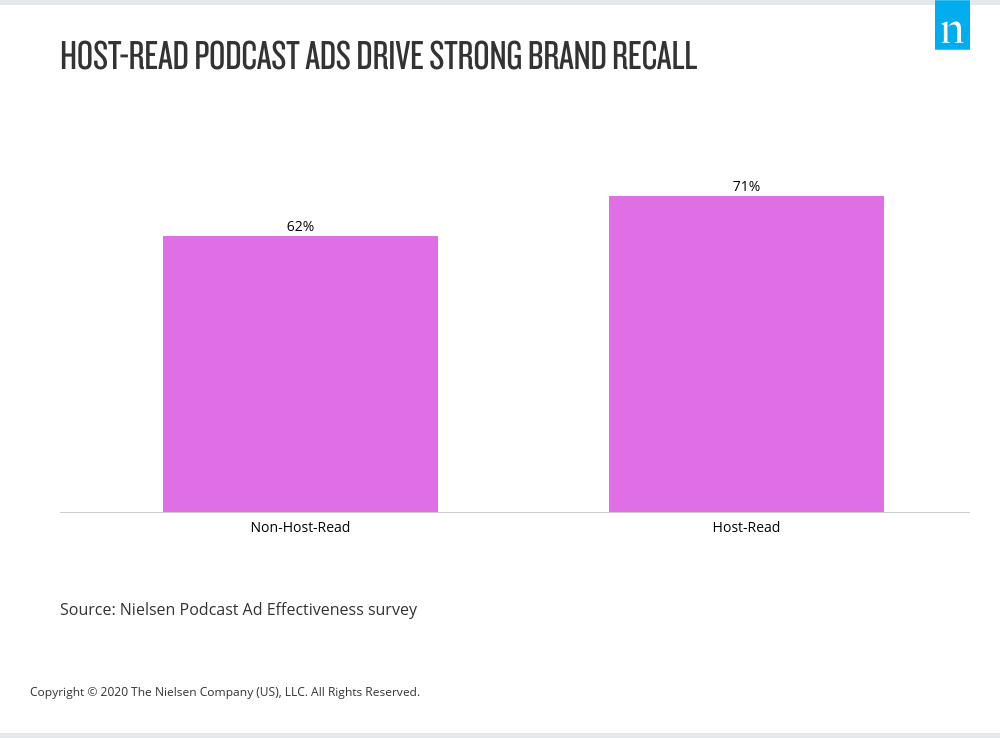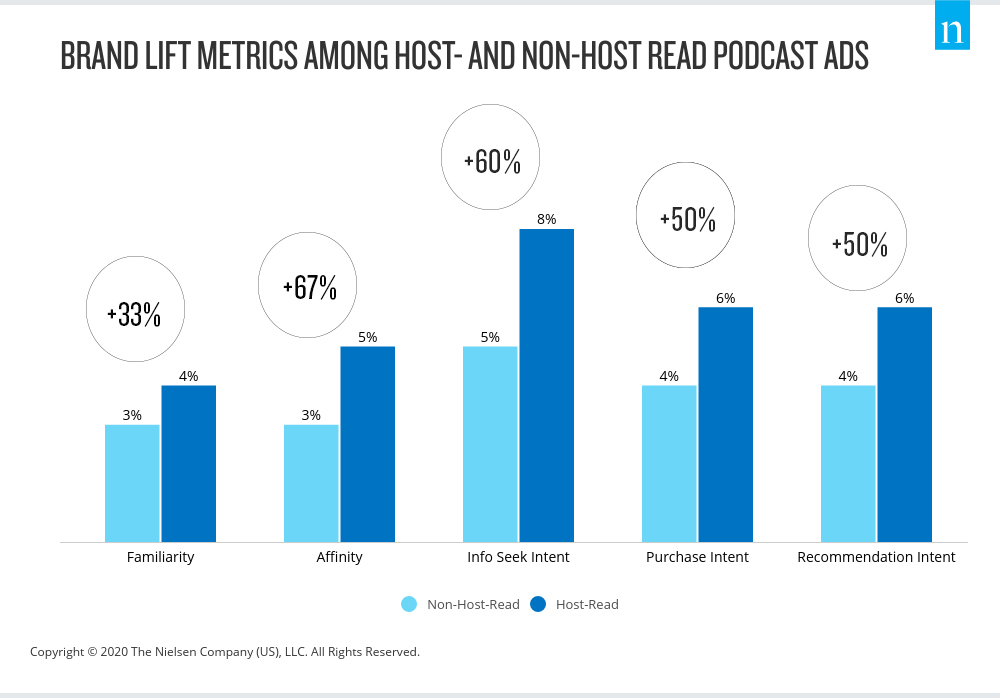As a consequence of being the year of COVID-19, 2020 has become the year of media consumption, especially during the spring lockdown. Yet while the massive consumption spikes we saw earlier this year have since dissipated, podcast engagement remains on track to post another record year, which is something all marketers should be tapped into.
The engagement with podcasts is both a testament to the medium and proof that the medium is not reliant on the workday commute to thrive. September 2020 research from eMarketer notes that more than 106 million Americans will be listening to podcasts by the end of the year, which represents annual growth of more than 16%. What’s more, the ad dollars have followed, with the IAB forecasting U.S. podcast ad spend growth of just under 15%, pushing total spend to roughly $1 billion.
It’s been well documented that podcast audiences are among the most engaged there are, and much of that reflects the hosts. But listeners’ affinity for show hosts is just as important from an advertising perspective as it is for show content. That’s because the ads that hosts read drive more brand recall than non-host-read ads. It is worth noting, however, that sponsor-read ads still drive powerful recall results.

Unlike other media, measurement in the podcast space isn’t a cut-and-dry endeavor. The myriad parties involved and increasing platforms that host and distribute the content inhibit the ability to collect holistic and representative listener data. As marketers weigh their campaign efforts, their real focus should be on aligning with podcasts that cater to their specific audiences rather than podcasts that simply boast mass reach. Importantly, a Nielsen study last year found that top-of-mind brand awareness for many popular brands was nearly 70% among podcast listeners.
To better understand and benchmark brand and content metrics among podcast listeners, Nielsen has conducted more than 260 surveys across 240 brands. That research, which involves presenting listeners with podcasts clips and assessing their engagement vs. those not exposed across an array of key brand metrics and content measures allows brands to measure the impact of their advertising or sponsorship on podcasts.
From a marketing investment perspective, our brand engagement data illustrates how host-read ads excel. For example, host-read ads outperform non-host-read ads when we look at inspiring listeners to seek more information about a product. Host-read ads also produce an average of 50% increase in purchase and recommendation intent among listeners when compared against non-host-read ads.

Aside from the fact that podcast ads drive significant brand lift, the podcast landscape is additionally lucrative because of its growth trajectory. Data from Nielsen’s Podcast Buying Power service shows that the U.S. podcast listener base has been growing at a 20% CAGR since 2014, and is projected to double by 2023. And even more importantly, adults 25-44 (a key buying demo) are driving much of that growth. Nearly 30% of adults 25-34, for example, listen to podcasts.
Podcast engagement in the audio space stands out much like streaming stands out in the video space, providing an ever-expanding array of options while growing the amount of time consumers spend each day with media. The big difference in the podcast space is the engagement with advertising.



